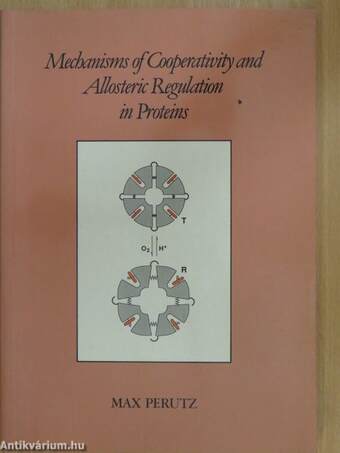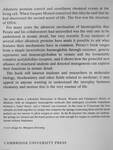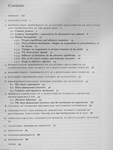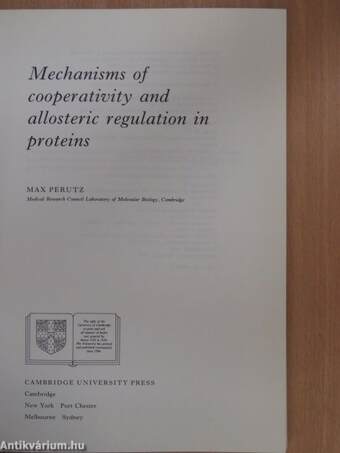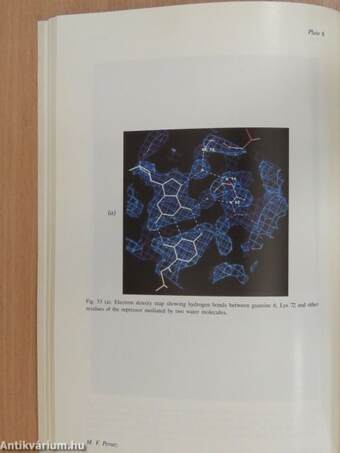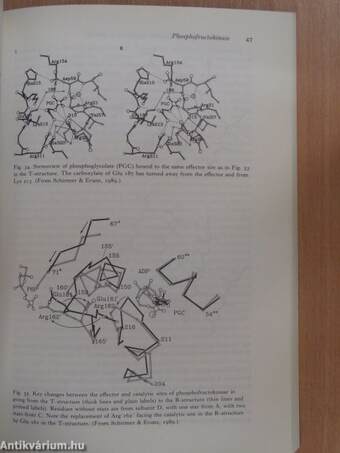1.068.285
kiadvánnyal nyújtjuk Magyarország legnagyobb antikvár könyv-kínálatát

VISSZA
A TETEJÉRE
JAVASLATOKÉszre-
vételek
Mechanisms of cooperativity and allosteric regulation in proteins
| Kiadó: | Cambridge University Press |
|---|---|
| Kiadás helye: | Cambridge |
| Kiadás éve: | |
| Kötés típusa: | Fűzött papírkötés |
| Oldalszám: | 101 oldal |
| Sorozatcím: | |
| Kötetszám: | |
| Nyelv: | Angol |
| Méret: | 24 cm x 17 cm |
| ISBN: | 0-521-38648-9 |
| Megjegyzés: | Színes és fekete-fehér ábrákkal. |
naponta értesítjük a beérkező friss
kiadványokról
naponta értesítjük a beérkező friss
kiadványokról
Fülszöveg
Allosteric proteins control and coordinate chemical events in the living cell. When Jacques Monod conceived that idea he said that he had discovered the second secret of life. The first was the structure of DNA.
For many years the allosteric mechanism of haemoglobin that Perutz and his collaborators had unravelled was the only one to be understood in atomic detail, but very recently X-ray analyses of several other allosteric proteins have made it possible to ask what features their mechanisms have in common. Perutz's book ranges from a simple invertebrate haemoglobin through enzymes, genetic repressors and immunoglobulins to viruses and the formidably complex acetylcholine receptor, and it shows how the powerful new alliance of structural analysis and directed mutagenesis can explore their functions in atomic detail.
The book will interest students and researchers in molecular biology, biochemistry and other fields related to medicine; it may appeal to anyone wanting to... Tovább
Fülszöveg
Allosteric proteins control and coordinate chemical events in the living cell. When Jacques Monod conceived that idea he said that he had discovered the second secret of life. The first was the structure of DNA.
For many years the allosteric mechanism of haemoglobin that Perutz and his collaborators had unravelled was the only one to be understood in atomic detail, but very recently X-ray analyses of several other allosteric proteins have made it possible to ask what features their mechanisms have in common. Perutz's book ranges from a simple invertebrate haemoglobin through enzymes, genetic repressors and immunoglobulins to viruses and the formidably complex acetylcholine receptor, and it shows how the powerful new alliance of structural analysis and directed mutagenesis can explore their functions in atomic detail.
The book will interest students and researchers in molecular biology, biochemistry and other fields related to medicine; it may appeal to anyone wanting to understand the interplay between chemistry and motion that is the very essence of life.
The cover shows a schematic illustration of Monod, Wyman and Changeux's theory of allostery, with an imaginary haemoglobin molecule that undergoes reversibie transitions between a 'tensevdeoxy- and a 'relaxed' oxy-structure. In the tense or T-structure the four subunits are held together by clamps that compress the springs connecting them and the haem pockets are too narrow to ailow oxygen to enter. In the R-structure the clamps are undone, the springs are relaxed and the haem pockets are wide enough for oxygen to combine with the haems without hindrance.
Cover design by Margaret Downing
CAMBRIDGE UNIVERSITY PRESS Vissza
Témakörök
- Idegennyelv > Idegennyelvű könyvek > Angol > Természettudományok > Biológia
- Idegennyelv > Idegennyelvű könyvek > Angol > Természettudományok > Kémia
- Természettudomány > Kémia > Biokémia
- Természettudomány > Kémia > Idegennyelvű
- Természettudomány > Biológia > Biológia, általános > Sejtbiológia
- Természettudomány > Biológia > Biológia, általános > Mikrobiológia > Általában
- Természettudomány > Biológia > Biológia, általános > Biokémia
- Természettudomány > Biológia > Biológia, általános > Idegennyelvű



